Corner toilet: the possibility of solving the problem of
A compact corner toilet can be an excellent choice when arranging a combined bathroom of a relatively small area. Of course, such products have their own characteristics, but in installation and in service they are not much more complicated than standard models.
In our article, we describe in detail the corner toilets, as well as give tips on their selection and installation.
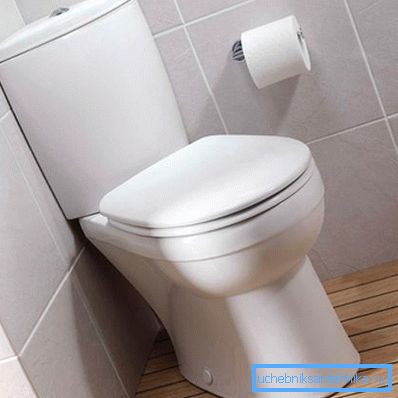
Pros and cons of design
The corner toilet compact, which is usually mounted in close enough bathrooms, by its design is almost the same as standard products. Both the bowl shape and the drain mechanism are used exactly the same, so with the correct selection of the model, the comfort level will not be reduced exactly.
This technical solution has several significant advantages:
- First of all, the installation of the device in the corner allows you to minimize the size of the “dead zone”, which is usually formed behind a standard toilet with a compact-type cistern. Of course, it can be used to store various things like a broom or mop, but in any case, the gain in area will be very useful.
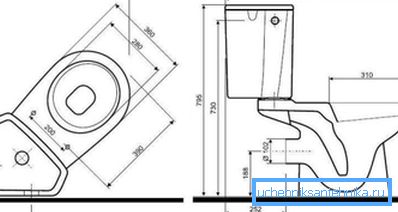
- Secondly, The corner tank for the toilet itself can take up less space. At the same time additional volume makes use of the device more convenient.
- Thirdly, Installing such a product in a separate bathroom frees up enough space to install a small sink or bidet. And it can be done even in a standard toilet of an apartment building without redevelopment.
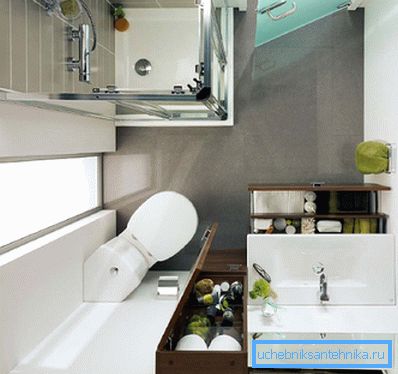
Despite all of the above, there is a solution to this and disadvantages:
- Attempting to install a corner floor toilet in a standard toilet does not lead to the desired results: the area gain will be minimal, but at the same time, the legs of a seated person are likely to rest against a wall.
- You also need to be careful when installing products of the hinged type: the mass of the cistern in the filled form is rather rather large, so that it can be mounted not on any wall at all. Drywall, for example, just can not stand it.
Tip! If you still want to do the installation of such a structure with your own hands, then you need to strengthen the wooden mortgage in advance for the plating of the plasterboard. It is desirable to use a long fastener, which will pass through the tree, and be buried in the supporting wall.
Selection and installation
Selection parameters
The price of high-quality sanitary ware is quite high, so before you buy such a product, you need to carefully examine all its characteristics:
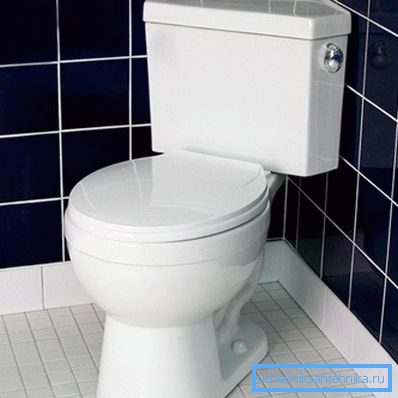
- First of all, you need to make sure that the size of the corner box box allows you to place it in the selected location. Special attention should be paid to risers and other pipes: sometimes they are a serious obstacle, especially since they cannot be transferred.
Note! If the riser is located not in the corner, but near one of the walls, then it will be necessary to lay a layer that can make it difficult to drain.
- Secondly, should determine the eyeliner. It is possible to find products on the market with both side and bottom connections, so choosing a model that matches the configuration of piping in your bathroom will not be difficult.
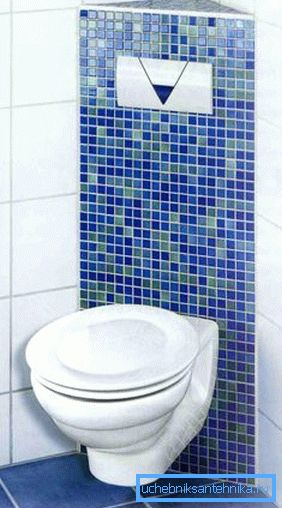
- Thirdly, it is worthwhile to build in advance the layout of all sanitary appliances in the room. So we can plan the bathroom more accurately, and the toilet, sink, bidet and shower will not interfere with each other.
Note! On the market, you can find corner toilets with a bidet-lid, which is very convenient: installing such a design saves us from having to purchase a separate sanitary fixture.
- As for the design and material, here the choice is entirely yours, and they are determined not only by the design of the room, but also by the financial possibilities. The most affordable models are made of earthenware, and the most expensive ones are made of porcelain and tempered glass.
Installation Recommendations
Despite the fact that the described product has a rather complicated structure, we are quite able to mount it with our own hands.
All work is performed in the following sequence:
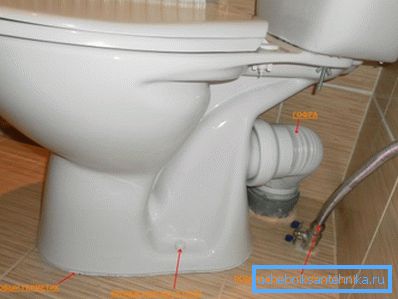
- First, we prepare communications: we attach a corrugation or a hard drain to a sewer riser, and on a pipe with cold water we install a flexible hose.
- Next, proceed to fixing the product itself. The floor structure is installed almost the same as the standard one: on a concrete base or a wooden lining with fixation in the floor with steel anchors.
- With mounted models it will be somewhat more difficult, but their installation can be facilitated by a corner installation for a toilet bowl. It is a frame with a fixed cistern and pipes, on which the faience bowl itself is hung.
- The installation is fixed with anchors to the floor and to the walls, ensuring the most rigid fixation. Then on its front panel with the help of the supplied fixtures we hang the toilet itself, connecting it to the hidden pipes.
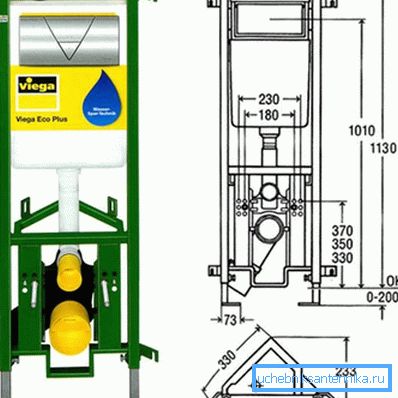
- We connect the tank to the drain bowl, ensuring maximum tightness of the joint. For fixing products using metal bolts with insulating gaskets.
- Connect the drain tank to the supply hose and supply water. If there are no leaks, then perform a test drain, and then close the installation with a decorative panel.
At the final stage, the instruction recommends to lubricate all the joints with silicone sealants. The base part of the floor-mounted toilet should be especially carefully treated, since it is at this point that leaks can occur.
Conclusion
As you can see, both a floor and a corner corner toilet have very tangible advantages. Of course, you should be very careful when installing them, but this applies to almost any plumbing.
So if you decide to independently take on this task, then in matters of choice, and in matters of installing a toilet bowl, you should listen to the recommendations outlined in the text and voiced on the video in this article.